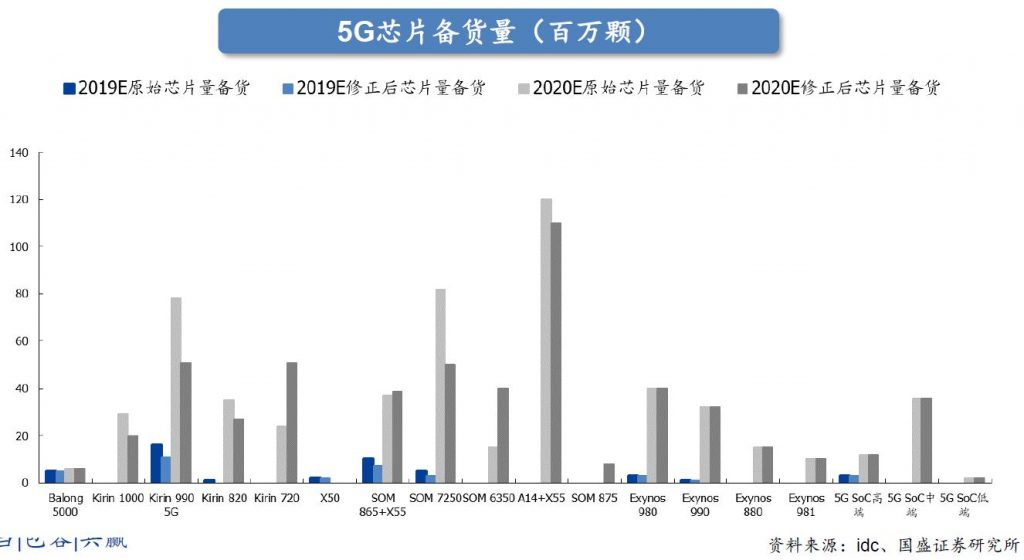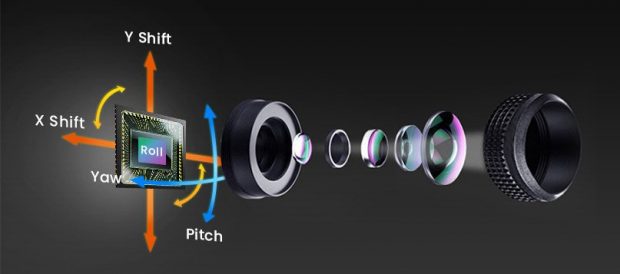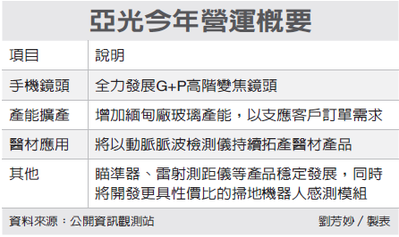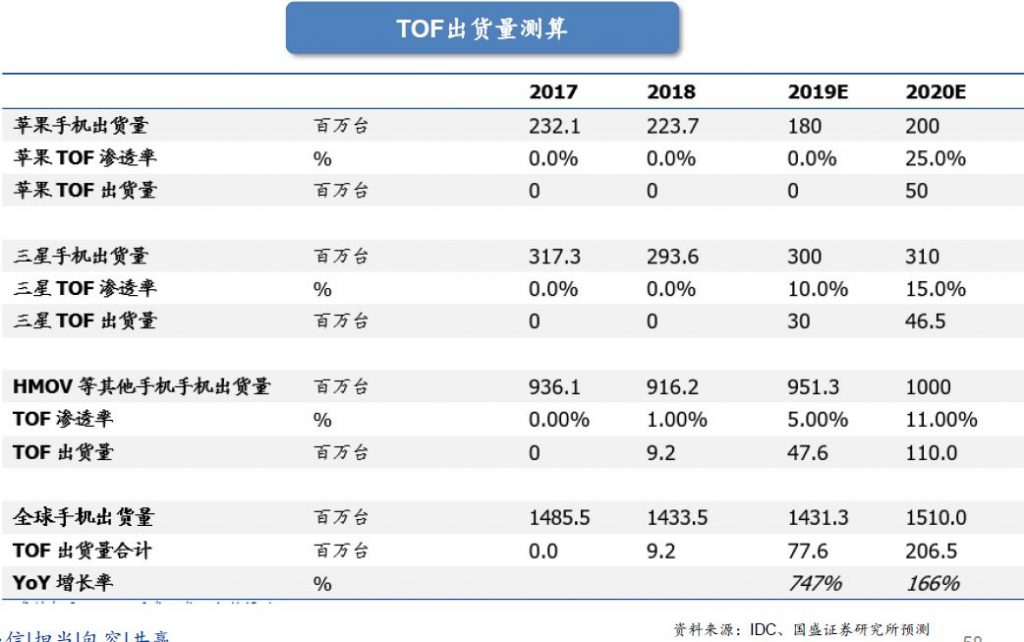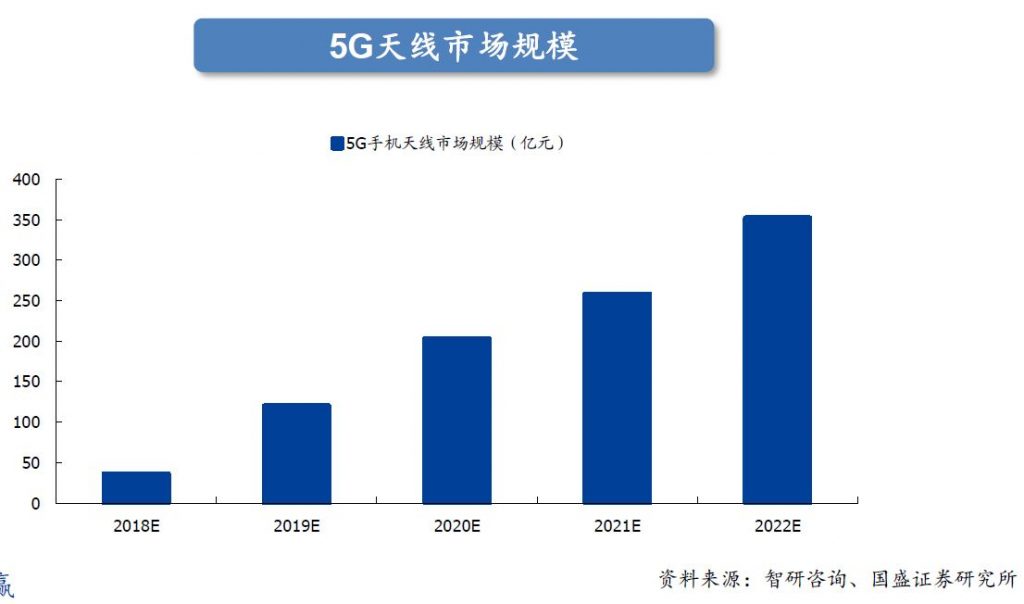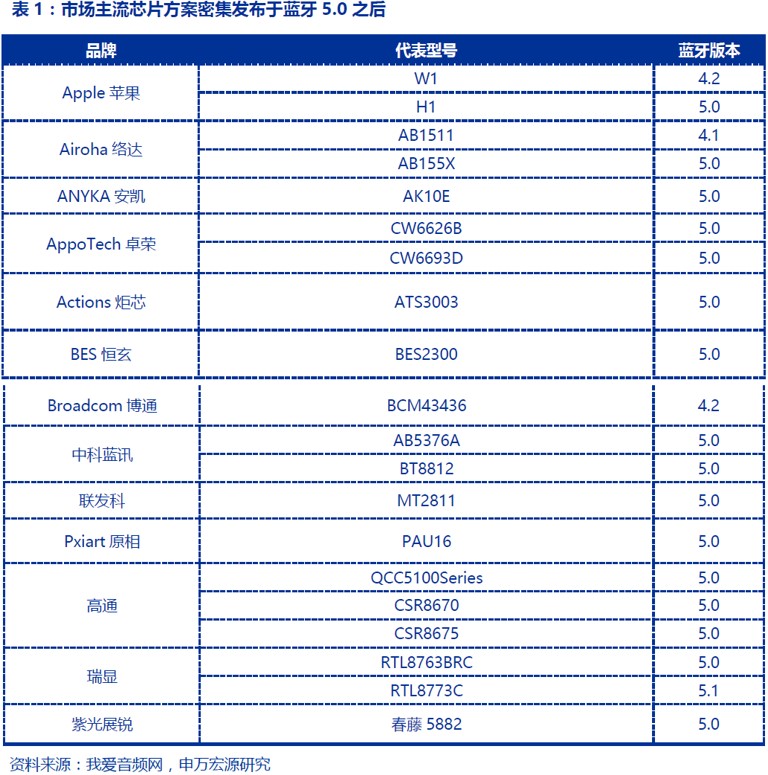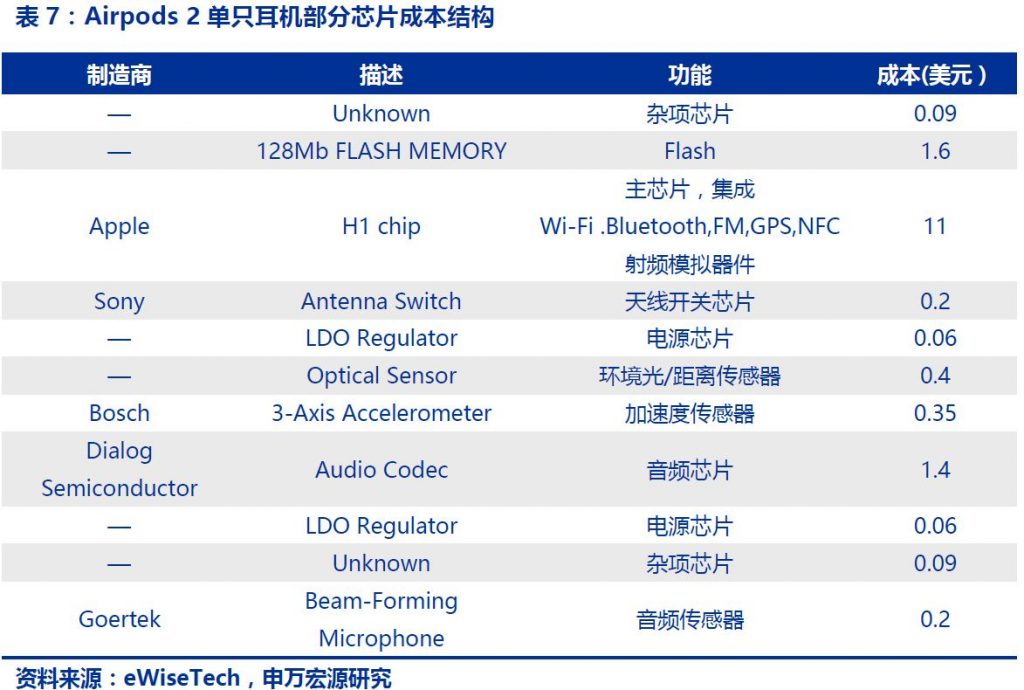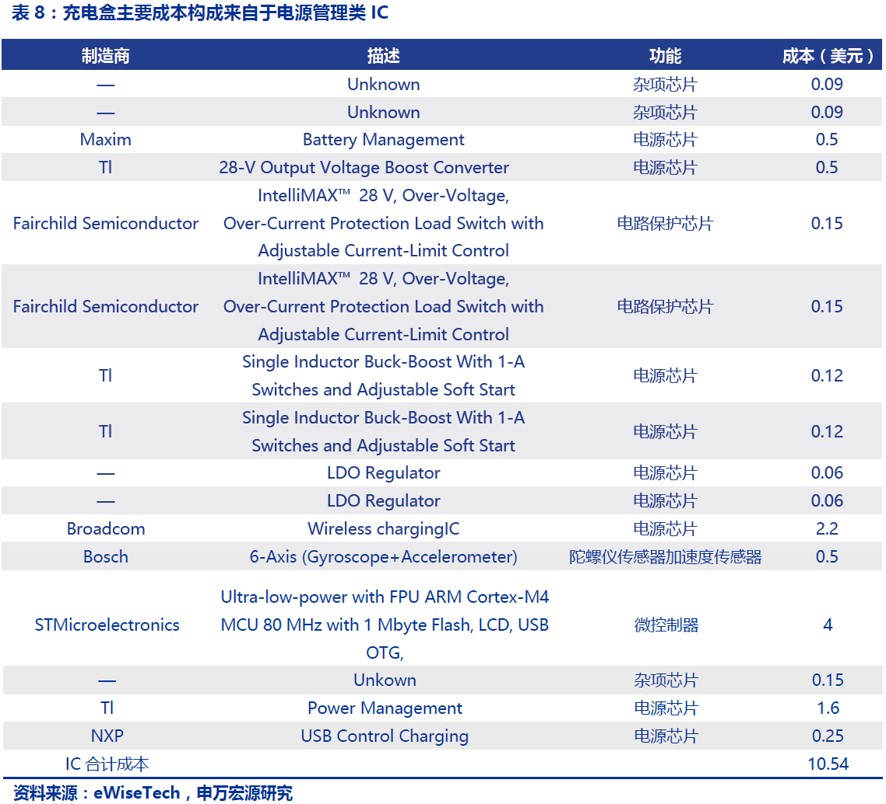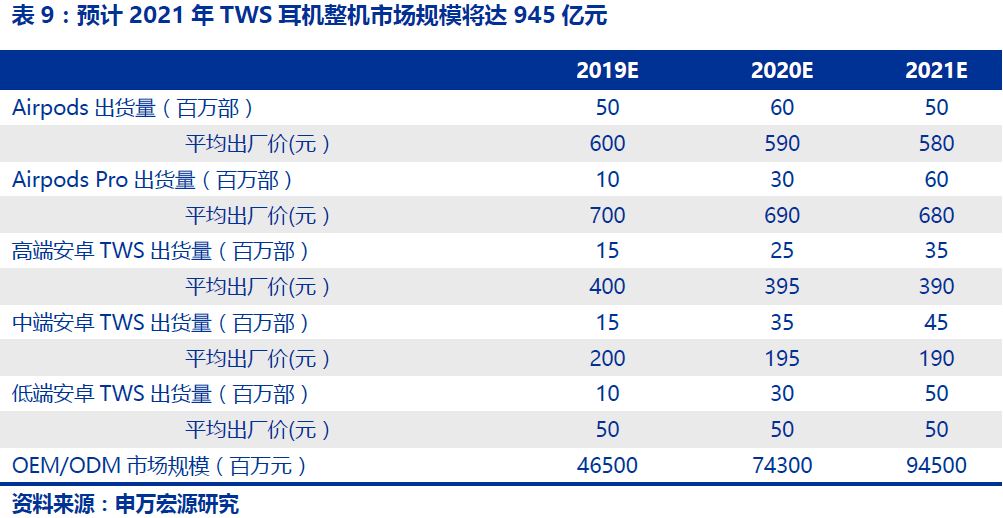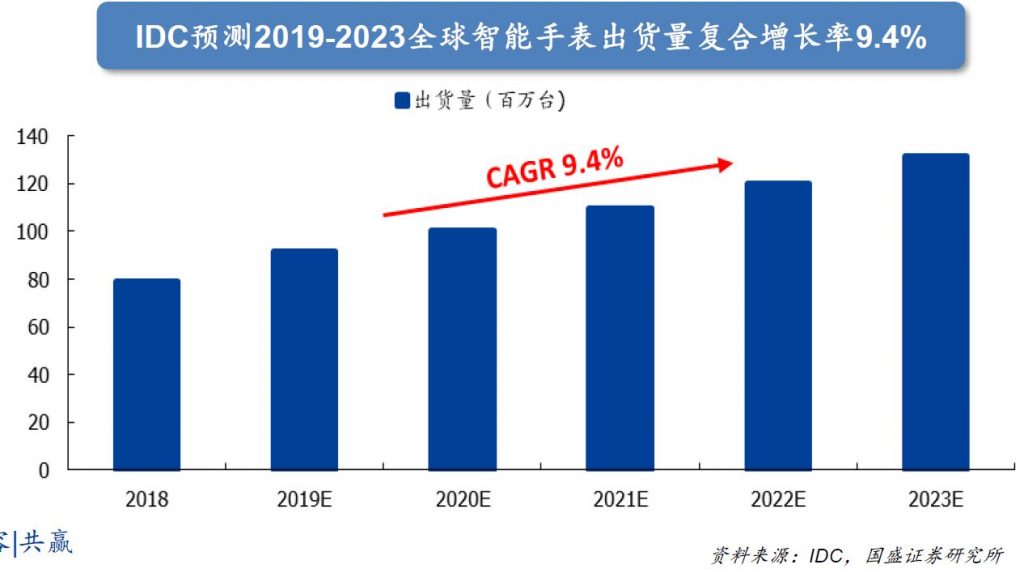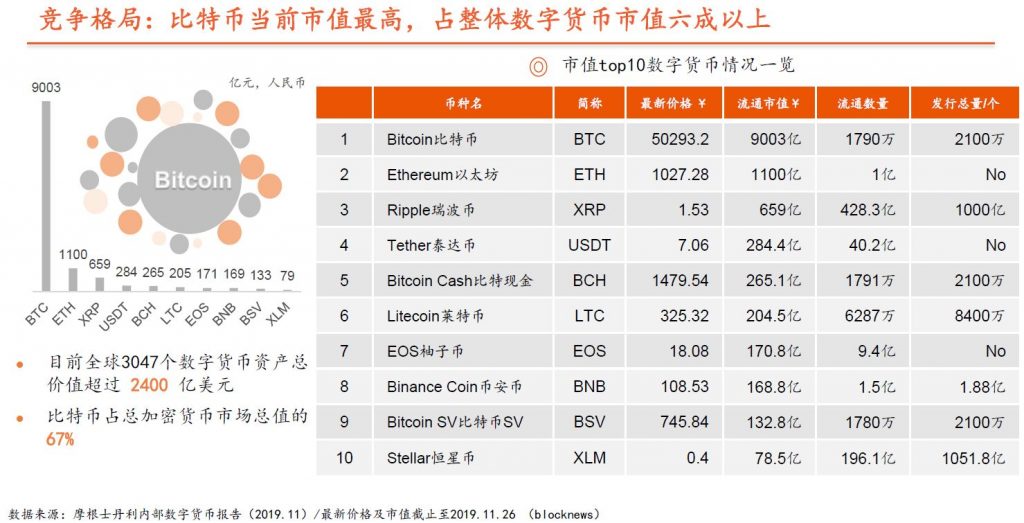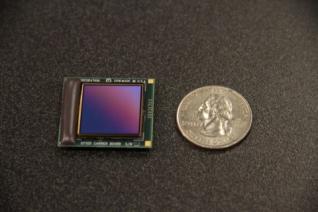
1-5: Apple’s 5G iPhone lineup to be released in 2020 reportedly will come with sensor-shift stabilization technology; Asia Optical will continue to expand its production base in Myanmar to create maximum operating benefits; etc.
Chipsets
Various 5G chip suppliers have increased their inventory, and Guosheng Securities estimates that the global 5G mobile phone shipments in 2020 will be 200M-300M units. TSMC’s 7nm process capacity began to fill the full line in 3Q19. In 1H20, capacity may be in short supply. 5G chip suppliers such as MediaTek, Qualcomm, Samsung, and Hisilicon are constantly requesting upstream and downstream cooperating factories to expand their production capacity and effectively raise the company’s inventory levels. (Guosheng Securities report)
Touch Display
Kopin Corporation has announced the development of a new OLED microdisplay – a 1.3” 2560×2560 (so-called 2.6K) panel. Kopin, who is a fabless OLED panel maker, began production of its OLED displays with its partner OLiGHTEK in 2Q18. Kopin has also secured production capacity from BOE’s and OLiGHTEK’s new OLED microdisplay fab that is ramping up currently in Kunming, Yunnan Province. (OLED-Info, Display Daily)
Camera
Some models of Apple’s 5G iPhone lineup to be released in 2020 reportedly will come with sensor-shift stabilization technology. The high-end 6.1” and 6.7” iPhones will each sport a triple-lens rear camera system with time-of-flight 3D sensing. Whereas optical image stabilization shift around the lens element, sensor shift moves the sensor inside the camera module directly. (Laoyaoba, Mac World, Sohu, 9to5Mac)
Lai Yiren, chairman of the optical component maker Asia Optical, has revealed that in 2020, the company will continue to expand its production base in Myanmar to create maximum operating benefits, and to fully promote zoom lenses. For mobile phone market, Asia Optical develops G+P zoom lenses with optical core technology advantages such as glass lenses, coatings, and GMP, among which prism products used in periscope lenses have been shipped to mainland China in 2019. (Laoyaoba, Sohu, Vdaily, UDN, UDN)
In terms of shipments, Guosheng Securities forecasts that 3D sensing demand for smartphones will increase from 40M units in 2017 to more than 200M units in 2019, of which the ToF models in 2019 are mainly concentrated in several high-end flagships. From 2020, TOF shipments will further explode, accounting for 40% of the overall 3D sensing. Guosheng Securities forecasts TOF shipments of 77.6M / 210M units in 2019/2020, a significant year-on-year increase of 747% / 166%. (Guosheng Securities report)
Memory
Macronix International chairman and CEO Miin Wu forecasts a steady recovery in market demand and a rebound in memory chip prices in 2020. The company counts Nintendo, Microsoft, Huawei, Sony, Apple, DJI and others among its clients. Macronix also provides specialized NAND flash chips but does not directly compete with global memory giants Samsung, SK Hynix, Micron and Kioxia Holdings, formerly known as Toshiba Memory. (CN Beta, Asia Nikkei, Digitimes, press)
Connectivity
Driven by 5G, global smartphones are expected to grow rapidly, increasing by 10% in 2020. 5G mobile phones will also rapidly penetrate to reach 35% in 2020, with shipments reaching 579M units. The number of 5G phone antennas will grow rapidly due to the fast growth of 5G phones. Guosheng Securities expects the market size of the antenna to reach CNY35.2B in 2022. (Guosheng Securities report)
According to SWS Research, since the release of Bluetooth 5.0, the true wireless stereo (TWS) market has really ushered in. Major manufacturers have released TWS products intensively. Currently, most of the series released by mainstream chip solution providers in the market are versions after Bluetooth 5.0, and only a few early products are for Bluetooth 4.2, including Apple’s W1 chip on 1st generation AirPods. (SWS Research report)
Wearables
SWS Research believes that in the field of Android high-end flagship, its supporting TWS will strategically benchmark Apple Airpods, so it is assumed that the penetration rate can reach 80%, and the average ASP is CNY700. In the low-end segment, a 50% penetration assumption is given. For Android models priced below USD100, given the limited demand for TWS headsets by this segment of consumers, no expectations were given. Based on the above assumptions, they estimate that the mid-to-long-term Android TWS headset market size will reach CNY212B. (SWS Research report)
According to Laoyaoba and eWiseTech data, SWS Research estimates that the BOM cost of Apple 2nd-generation AirPods (excluding the charging box) chipsets is about USD26.6 (total left and right ears). The cost of the Apple H1 chip is as high as USD11. Speakers, motherboards, passive components, connectors, and structural parts cost about USD10-15. (SWS Research report)
Take Apple’s 2nd generation AirPods charging case as an example. According to eWisetech data, the overall chip cost is about USD10.54, of which the main control chip MCU costs about USD4, and the total cost of power management chips is about USD5.7, which is more than half of the IC cost. The remaining cost components in the charging box mainly come from the battery, structural parts and motherboard. (SWS Research report)
SWS Research predicts the shipments of Apple AirPods and Android TWS headsets in the next 3 years. The core assumption is that after 3 years of rapid growth in the Android-based TWS, the product distribution structure of each level is roughly similar to that of smartphones. At the same time, it is assumed that the average ex-factory price of products of the same level decreases by 1% -2% each year (the functions of the same type of products are also continuously upgraded). Considering that the price of low-end products is already low, in the dynamic state of low-end product function upgrades, it is assumed that the final ex-factory price remains unchanged. It is estimated that the OEM / ODM market size will reach CNY465B / 743B / 945B in 2019-2021, respectively. (SWS Research report)
According to IDC’s forecast, global shipments of the wearable device market are expected to exceed 222.9M units in 2019. If calculated at a compound annual growth rate of 7.9%, the market size will increase to 302.3M units in 2023. The main driving force for growth is smartwatches and earbuds will have a market share of over 70% in 2023. (Guosheng Securities report)
Artificial Intelligence
Snap, the parent company of Snapchat, has acquired a Ukraine-based company called AI Factory for around USD166M, to help the social media app provide a new type of video service that uses a person’s face to play short clips. The video feature is Cameos, and it lets a person take a selfie and then it gets animated and put into a short video. (TechCrunch, Variety, PYMNTS)
Fintech
According to Ping An Securities, the total value of 3,047 digital currency assets worldwide currently exceeds USD240B. Bitcoin accounts for 67% of total cryptocurrency market value. (Pingan report)
